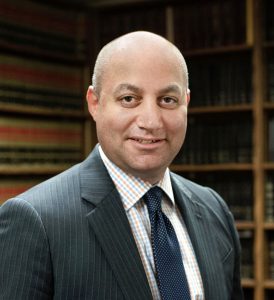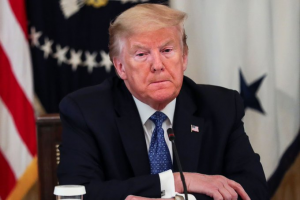A new film reveals and renews the tensions that went into creating the Sept. 11 museum beneath the memorial waterfalls and reflecting pool at the World Trade Center.
Unhappy museum officials have objected and sought changes to “The Outsider,” a documentary being released this week that reveals conflicting visions behind the New York landmark, which opened in 2014.
The film becomes public Thursday through an unusual venue — Facebook, which will stream it to users for $3.99. Following that, it will be available in some theaters and on other streaming services leading up the 20th anniversary of the attack.
Also Read: ‘Fast and Furious 10’ release date announced, check details here
The “outsider” is Michael Shulan, former creative director at the museum, who was often at odds with Alice Greenwald, current president and CEO, and her allies. The two worked for several years on its development and grew to have fundamental differences on how the story should be presented.
Essentially, Shulan felt the museum should be more welcoming, and better address what led up to the attack and its aftermath — wars in Afghanistan and Iraq and restrictions on personal liberty in the U.S. Some critics feel the facility now is hard to stomach with a concentration on the horrors of the day.
“Michael wanted to engender questions,” narrator Bob Garfield says in the film. “Alice wanted to provide answers.”
Also Read: ‘The Night House’ movie review: Rebecca Hall shines in eerie thriller
The husband-and-wife filmmakers, Steven Rosenbaum and Pamela Yoder, have their own history documenting Sept. 11, 2001. Their company was filming a show for Animal Planet in Manhattan that day, but pivoted after the planes hit. Rosenbaum told his crews to film what was happening in the street. That material and other crowd-sourced video was used for the 2002 film, “7 Days in September.”
In 2008, they granted rights to the museum to use what it wanted of the 500 hours of video collected that week. In return, they were offered behind-the-scenes access to the museum’s work with thoughts that it could make an interesting film in itself.
“It was meant to be an observational documentary,” Rosenbaum said. “For the first two years, the museum was what we were told it was going to be.”
Shulan, not part of the world of museums and curation, was recruited for his job after he opened a photo gallery of work from 9/11. He was an outsider. He became frustrated with those museum professionals and, clearly, they with him.
The filmmakers took his side in the dispute, and said they don’t like what the museum has become.
“It’s nationalistic, belligerent and grievance-based,” Rosenbaum said. “If you went, you would wind up feeling sad and angry, and is that what a museum is supposed to do?”
Shulan declined comment on the film, other than to say he wasn’t aware of its focus on him until after it was completed. He left the museum after it opened, as he always intended.
The museum’s spokeswoman, Lee Cochran, said “The Outsider” looks at the facility through a specific ideological lens that “we do not share.
“At a moment when so many institutions in the U.S. are subject to ideological and partisan divisions, the Memorial & Museum must remain a sacred place that seeks to educate and unify,” Cochran said. “We made clear to the filmmakers that we were disappointed by many of their decisions, which we think are disrespectful towards victims and their families.”
A concentration on how 9/11 changed America would make the museum outdated as soon as it opened, the museum has argued.
Museum officials had the right to review the film, primarily for security issues, and screened it in May. A few weeks later, its lawyer sent filmmakers a lengthy list of objections.
Most have been ignored, and some seem trivial. Officials claimed, for example, that a scene showing an exchange about potential items for sale at the museum’s gift shop was defamatory. They said including a staff member’s offhand comment that “fruit is so much healthier than donuts” would damage that person’s reputation.
They also objected to filmmakers showing museum officials reviewing a harrowing audiotape of a woman in the World Trade Center talking to an emergency operator as she realizes she’s about to die, and video that shows victims either jumping or falling to their deaths.
Since both were rejected for potential display, the museum said these scenes will be unnecessarily tough to watch. Filmmakers said they wanted to illustrate the type of difficult decisions the creative director and curators faced.
Besides, editorial choices are their prerogative, not the museum’s, they said.
After making their objections known, the museum said it is not pursuing them further, nor making any attempt to stop the film’s distribution.
Separate from the film, Rosenbaum and Yoder said they are concerned about the museum imposing restrictions on how researchers use the video that they donated. The museum said it has the right to review portrayal of the footage to ensure accuracy but isn’t aware of any researcher yet requesting to see some.
That raises the question of whether a grudge against museum officials may have affected their choices in making “The Outsider.” Rosenbaum said the film was finished before they learned about the potential access issue.
The film’s timing is difficult for the museum, which has seen attendance drop because of the pandemic and cut back jobs and days that it is open.
Going to Facebook to first distribute the film is a novel approach and something of a test run, since it is believed to be the first time it has been tried. Filmmakers said they aren’t aware that Facebook is promoting “The Outsider.”
“It could be millions of audience members or it could be 35,” Rosenbaum said. “It’s impossible to know and it’s gut-wrenching.”
The film will be in some theaters on Friday, then on iTunes, Amazon and Google Play.






